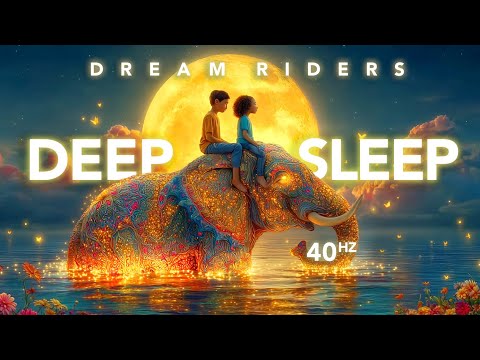You might wonder if there’s actual science behind Progressive Muscle Relaxation, and you’d find a rich history confirming its benefits.
Progressive muscle relaxation (PMR) was developed in the 1920s by Edmund Jacobson, an American physician. He believed that muscle tension was a major contributor to anxiety and stress, and that by systematically tensing and relaxing different muscle groups, individuals could achieve a state of deep relaxation. Jacobson’s research and techniques became popular in the field of psychology and have been used as a relaxation technique ever since.
Today, you can use PMR as a safe and effective tool to manage your tension, fostering both physical and emotional well-being.
Key Takeaways
- Dr. Edmund Jacobson pioneered Progressive Muscle Relaxation (PMR) in the 1920s, establishing the foundation of PMR by identifying the correlation between tense muscles and anxiety.
- PMR has expanding therapeutic applications in diverse clinical settings and is effective in managing conditions like anxiety and stress without medication.
- PMR has shown particular effectiveness among the elderly population and contributes to cost-effective health promotion strategies.
- PMR can be integrated with hypnotherapy and guided imagery for psychological care and is recognized by hypnotherapists for deepening relaxation and managing discomfort.
Early 20th Century Origins
You’ll find that the origins of progressive muscle relaxation date back to the early 20th century, when Edmund Jacobson first began his pioneering work. Jacobson’s PMR program was designed to mitigate the psychological effects of anxiety by teaching individuals to identify and control muscle tension through a cycle of tension and relaxation.
This systematic approach emphasized the ability to tense and relax specific muscle groups, acknowledging the link between mental stress and muscle tension combined. By focusing on this relationship, progressive relaxation reduces anxiety and its impact on the autonomic nervous system.
Later, Joseph Wolpe refined these techniques, creating a more accessible form of PMR that complemented therapeutic strategies for anxiety disorders, such as phobias and panic attacks.
Dr. Edmund Jacobson’s Contribution
Dr. Edmund Jacobson’s groundwork in progressive muscle relaxation, a technique you can utilize to ease stress, marked a pivotal shift in understanding the body’s response to anxiety. Jacobson developed a method that highlights the interplay between muscle tension and mental calmness, establishing the foundation of PMR.
Here’s how he contributed:
- Identification: Jacobson pinpointed the correlation between tense muscles and anxiety.
- Innovation: He devised progressive muscle relaxation techniques to systematically address the issue.
- Education: Through his book, he educated individuals on tensing and relaxing specific muscle groups.
- Distinction: His work differentiated between true relaxation and mere rest.
PMR Technique Development
Building on this foundation, you’ll find that every muscle group in your body can be methodically relaxed through PMR’s refined techniques. Progressive muscle relaxation training involves sequential tensing and relaxing of muscle groups, providing patients with an exercise that mitigates the effects of stress and tension in the body. With the goal of muscle relaxation, training sessions are designed to enhance bodily awareness and control over the tensing muscle response.
Here’s a brief breakdown of the PMR technique development:
| Phase | Description |
|---|---|
| Tension Recognition | Learning to identify and differentiate tense muscles |
| Controlled Relaxation | Systematic tensing and releasing of muscle groups |
| Consolidated Relaxation | Mastering deep relaxation through repeated practice |
This analytical approach ensures safety and efficacy, equipping you with a reliable method to combat anxiety and improve overall well-being.
Expansion in Clinical Settings
As you consider Progressive Muscle Relaxation (PMR), it’s important to recognize its expanding therapeutic applications in clinical settings. Its efficacy extends across diverse patient populations, offering a versatile approach to managing conditions such as anxiety and stress without medication.
Studies have shown PMR’s particular effectiveness among the elderly, highlighting its role in enhancing patient autonomy and contributing to cost-effective health promotion strategies.
Therapeutic Applications Growth
You’ll find that over the past few decades, PMR has expanded into numerous clinical settings, aiding in the treatment of conditions like anxiety and chronic pain. This growth is marked by:
- Promoting Psychological and Physiological Well-being: Progressive muscle relaxation is used to enhance both mental and physical health, mitigating the effects of stress.
- Managing Generalized Anxiety: Evidence supports PMR’s effectiveness in reducing symptoms of generalized anxiety, often in conjunction with deep breathing techniques.
- Effects of Progressive Muscle Relaxation: Research shows significant benefits in relaxation and stress reduction, contributing to overall patient safety and comfort.
- Guided Imagery in Promoting Relaxation: PMR, paired with guided imagery, has shown to deepen relaxation states, particularly in settings focused on muscle relaxation and breathing exercises.
Diverse Patient Populations
Within the realm of clinical practice, you’ve likely encountered progressive muscle relaxation as it has extended its reach to benefit a diverse range of patient populations. As you use this knowledge to guide treatment, it’s crucial to consider the evidence supporting the benefits of these approaches for patients undergoing various challenges. PMR’s role in providing pain relief for chronic pain sufferers, including those with abdominal pain, is well-documented. Stress and anxiety, which can exacerbate pain, are also effectively managed through PMR, ensuring relaxation reduces anxiety associated with such conditions.
| Patient Population | Clinical Setting | Impact of PMR |
|---|---|---|
| Schizophrenia Patients | Psychiatric Units | Reduces Stress and Anxiety |
| Older Adults | Geriatric Care | Alleviates Anxiety |
| Heart Disease Patients | Cardiology Wards | Enhances Recovery |
| COVID-19 Patients | Isolation Units | Supports Emotional Well-being |
| Postpartum Depression | Maternal Health Services | Mitigates Depression Severity |
Safety in application and patient autonomy are paramount in these environments, where PMR serves as a non-pharmacological tool for health promotion.
Modern Adaptations and Uses
Exploring modern adaptations and uses of Progressive Muscle Relaxation, you’ll find it integrated into various therapeutic practices to alleviate stress and improve mental health. Consider the following:
- Abbreviated Progressive Muscle Relaxation: Training in PMR has been condensed for those needing quicker sessions, proving beneficial for adults with enduring health conditions to reduce stress efficiently.
- Psychological and Physiological States: The effectiveness of Progressive Muscle Relaxation is supported by its impact on reducing cortisol levels and calming the sympathetic nervous system.
- Tailored Interventions: Therapists are using PMR and tailored scripts can be given to individuals, ensuring a personalized approach to improve their unique health outcomes.
- Hypnotherapy Integration: Ideas for hypnotherapists using PMR include combining it with guided imagery to enhance relaxation techniques, making it a robust tool in psychological care.
What is the origin of Progressive Muscle Relaxation and its history?
Progressive Muscle Relaxation was developed in the 1920s by Dr. Edmund Jacobson. He used this technique as a way to alleviate tension and stress in his patients. By systematically tensing and relaxing different muscle groups, Jacobson found that people could achieve a deep state of relaxation. This marks the progressive muscle relaxation origin.
Research and Evolving Insights
You’ve seen how progressive muscle relaxation (PMR) began in the 1920s, but it’s the ongoing research that sharpens our understanding of its clinical efficacy.
Studies continue to refine the technique, ensuring it’s both practical for modern use and grounded in robust evidence.
Insights from recent applications in diverse medical settings underscore PMR’s versatility in managing stress-related conditions and chronic pain.
Origins in 1920s
In the 1920s, Edmund Jacobson’s research into muscle relaxation evolved into a comprehensive method for stress reduction. Analyzing the subtle tension in individual muscles, Jacobson devised a protocol that could help decrease sympathetic arousal, fostering feelings of relaxation. His method underscored the importance of recognizing the difference between tense and relaxed states.
Here’s a clinical breakdown of Jacobson’s insights:
- Investigated the Relaxation Response: Jacobson systematically studied how muscle relaxation influences overall calmness.
- Tension in Individual Muscle: He focused on identifying and controlling muscle tension.
- Forms of Relaxation Training: His work laid the groundwork for various relaxation techniques.
- Stefano et al.: Later researchers, including Stefano and colleagues, built upon Jacobson’s findings to further validate the efficacy of muscle relaxation therapies.
Technique Refinement
As your understanding of progressive muscle relaxation (PMR) deepens, consider how subsequent researchers refined Jacobson’s original technique, integrating new insights to enhance its efficacy and accessibility. Technique refinement emphasized first tensing each muscle before relaxing it, ensuring that the contrast between tension and relaxation is clearly perceived. This exercise is repeated systematically throughout the whole body, allowing for a deeply relaxed state.
Typically, PMR is performed seated or lying down, with individuals lying down with eyes closed to minimize distractions and focus on the sensations. Researchers advocate for a gradual approach to relax the muscles, promoting safety and preventing muscle strain.
These refinements have made PMR more user-friendly while preserving its therapeutic qualities, as evidenced by its continued application in clinical settings for stress-related conditions.
Modern Application Studies
Exploring modern research, you’ll find that studies on Progressive Muscle Relaxation (PMR) continue to reveal its adaptability and effectiveness in treating a variety of psychological and physiological conditions. Empirical evidence points to PMR as a robust tool:
- Systematic Reviews underscore PMR’s role in reducing anxiety associated with pain, confirming its use as a non-pharmacological intervention.
- Effects of PMR on surgery patients show improved postoperative outcomes, with PMR inducing relaxation and lessening physiological stress.
- Quality of Life enhancements have been documented, particularly in chronic pain conditions where PMR aids in managing discomfort.
- Hypnotherapists Using PMR have integrated the technique into their practice, recognizing its value in deepening the state of relaxation for therapeutic purposes.
Safety in PMR’s application is paramount, ensuring it remains a trusted method in psychological and physical health management.




